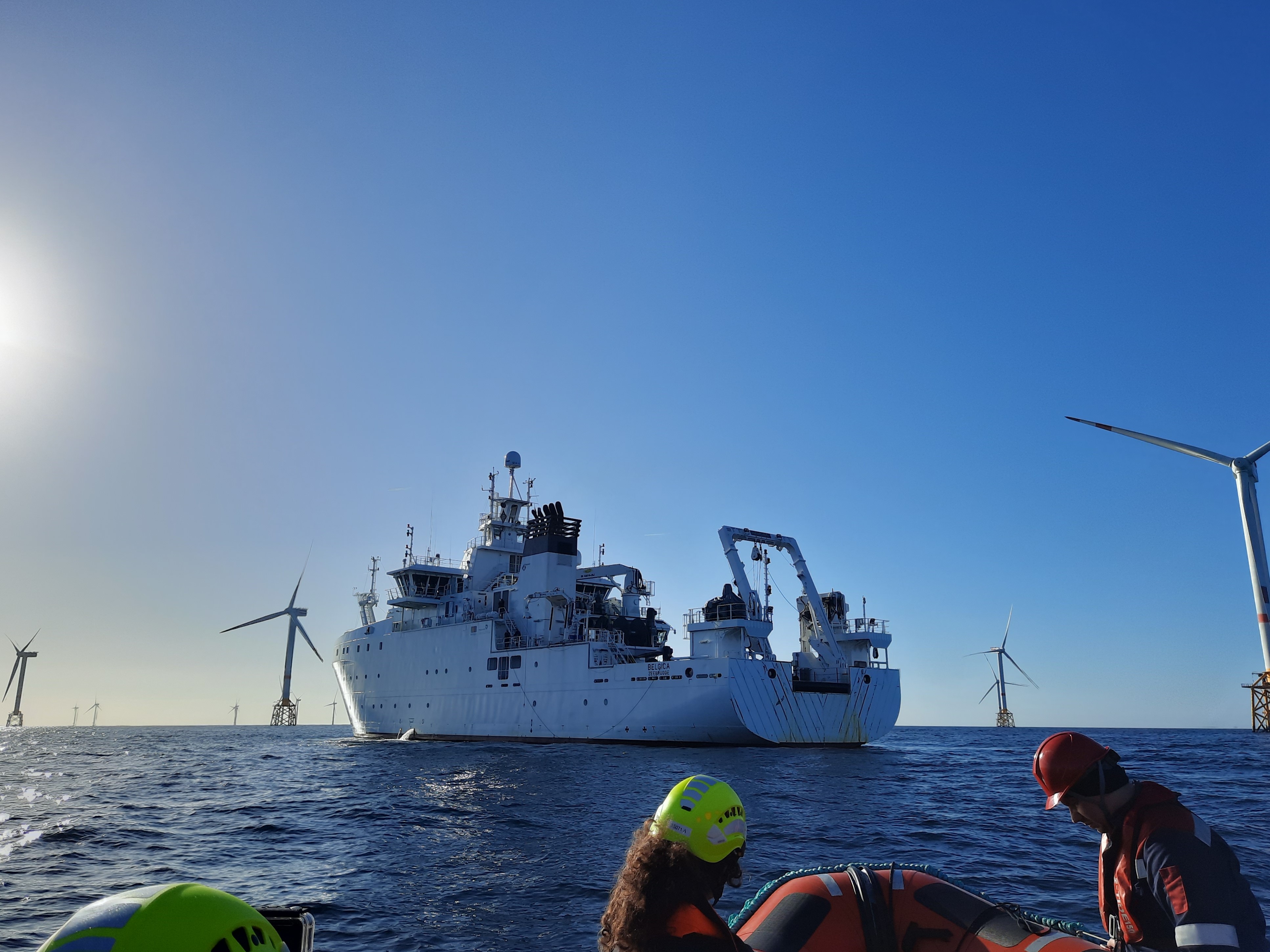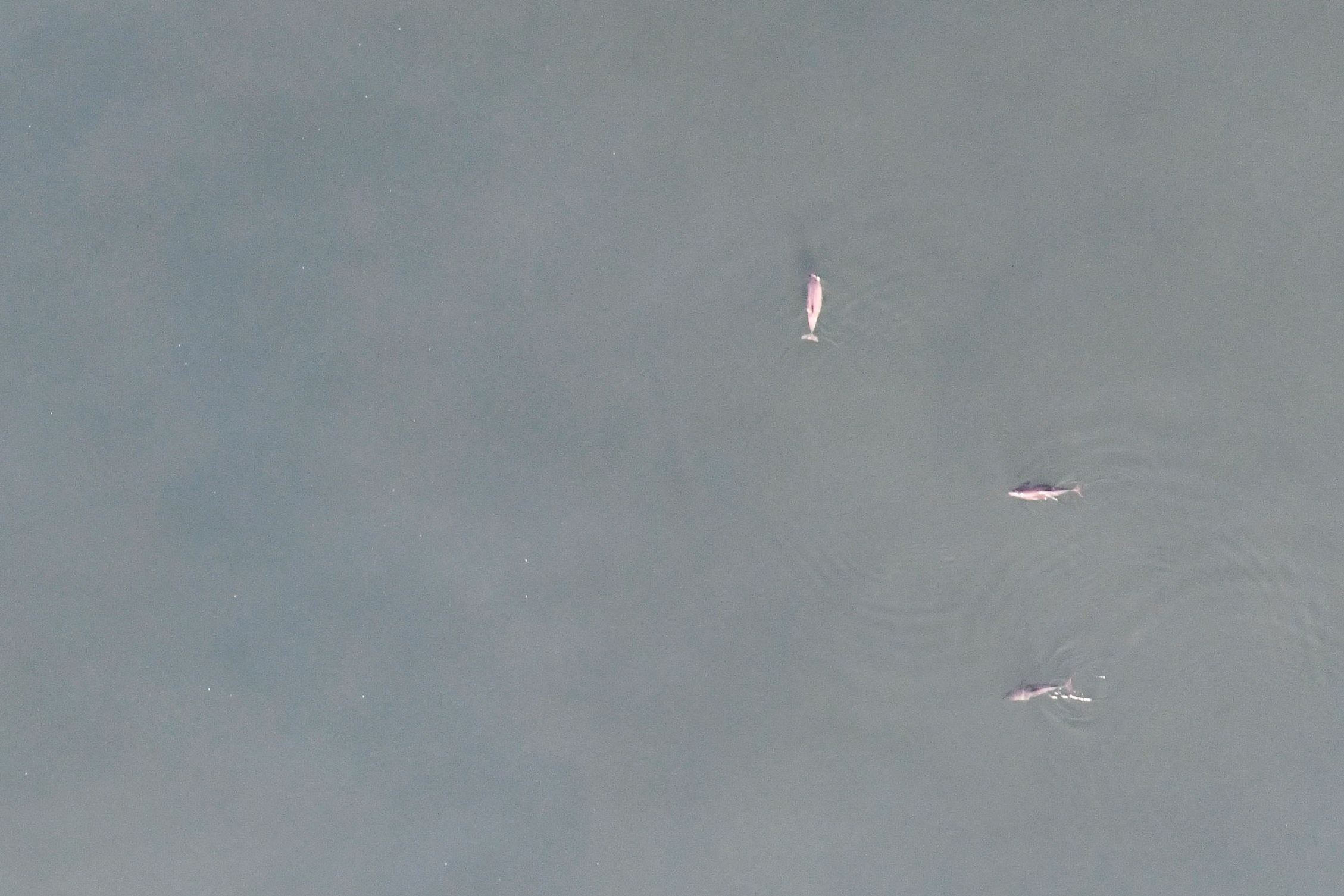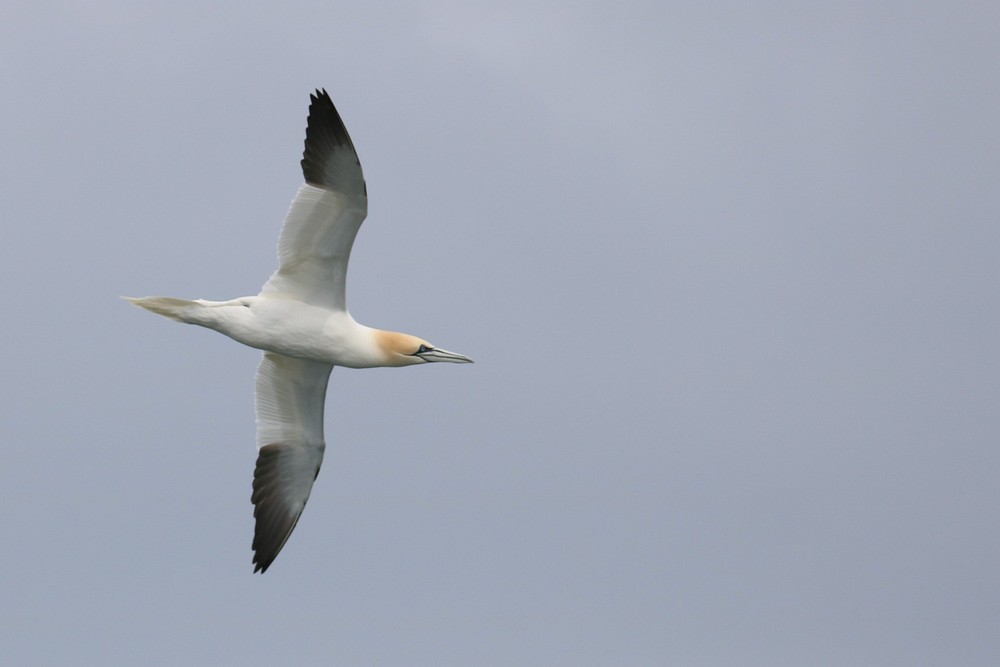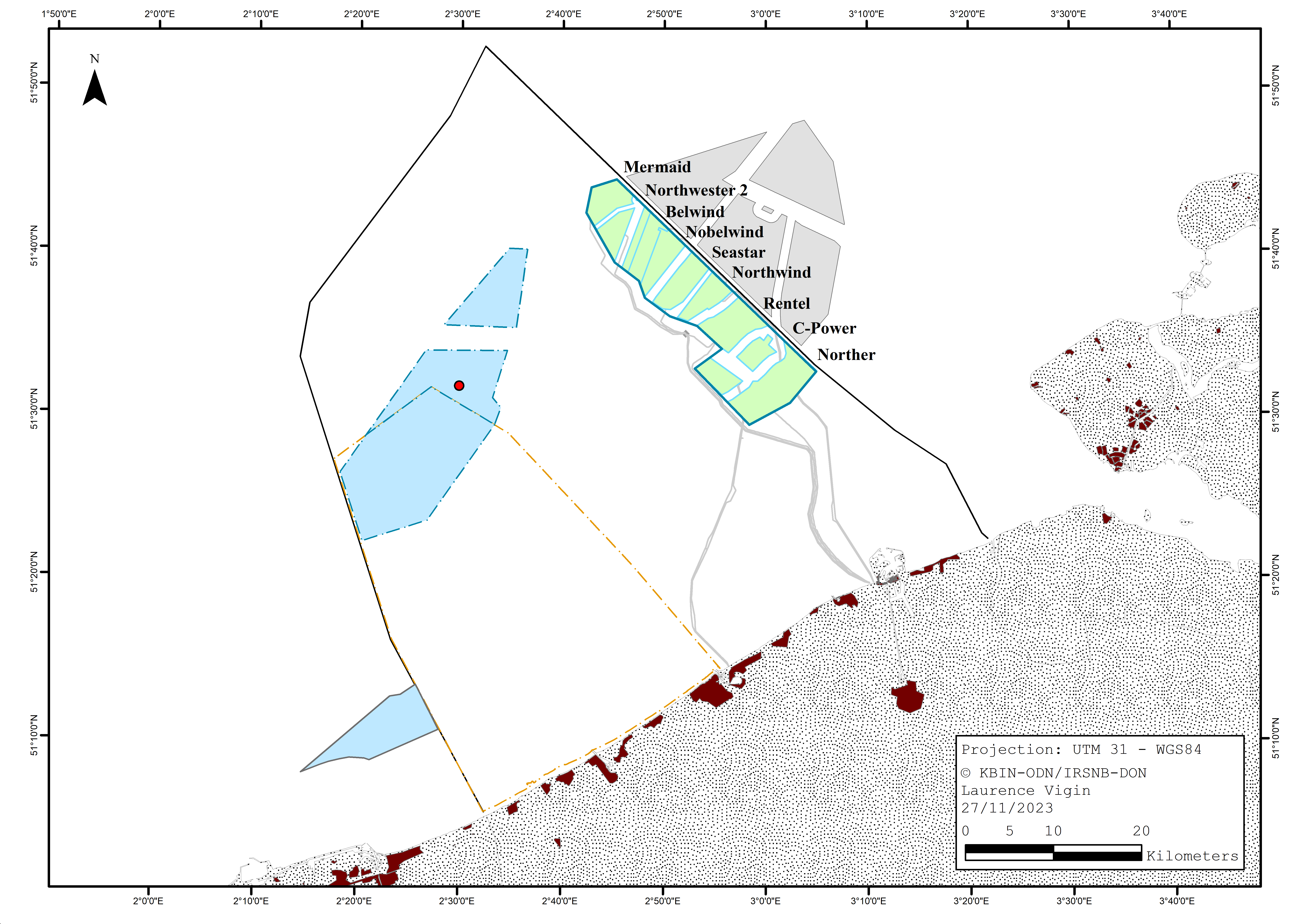15 years of monitoring the ecological effects of Belgian offshore wind farms still yields new insights

Fifteen years into the programme, monitoring of the ecological effects of Belgian offshore wind farms continues to provide new insights. That is an important conclusion of the latest WinMon.BE report that summarizes the findings on bottom-dwelling invertebrates, fish, harbour porpoises and birds. Only through sustained and adaptive monitoring can we ensure that we design and build offshore wind farms in the most eco-friendly way.
At present, eight offshore wind farms are operational in the Belgian part of the North Sea, totalling an installed capacity of 2.26 Gigawatt (GW) and consisting of 399 offshore wind turbines. Together they occupy an area of 238 km² along the border with Dutch waters and produce an average of 8 TWh annually. This accounts for around a third of gross electricity production from renewable energy sources in Belgium.
The impacts on the marine ecosystem, both positive and negative, have been investigated through the WinMon.BE monitoring and research programme from the very start of the construction of the first wind farm in 2008. The scientific insights obtained have always informed the management and development of this first Belgian offshore wind farm zone. In their latest report, scientists of the Institute of Natural Sciences, the Research Institute for Nature and Forest (INBO), the Marine Biology Research Group of Ghent University and the Research Institute for Agriculture, Fisheries and Food (ILVO) discuss the latest findings from 2022, summarize some trends from 15 years of monitoring, and identify where additional research and the development of additional mitigation measures is needed.
Macrobenthos
Long-term impacts of offshore wind farms on the macrobenthic communities (roughly the organisms that live on the seabed and are visible to the naked eye) that inhabit the surrounding natural soft sediments were investigated over a time span of 13 years (2008–2020). The sediments around and between the wind turbines were also studied in this context.
Because wind turbines interfere with water currents, fine sediments settle more easily here. The sediments in wind farms also get organically enriched by the feces of organisms that colonized the turbines themselves (such as mussels, anemones and crustaceans), and by dead animals that fall from the turbines. For the macrobenthos, a higher abundance, species richness and diversity was found around the wind turbines. Furthermore, higher abundances were also documented in the gullies between sandbanks on which the wind farms are typically constructed. The macrobenthos community continues to change, no stable state has yet been reached after 13 years of offshore wind farm operations.
In addition, macrobenthic diversity, abundance and species richness were also correlated with climate-related predictors (sea surface temperature and its natural variability on a time scale of several decades) which demonstrates the importance of also including such environmental variables in the study.
Demersal Fish
Changes in species distribution patterns were identified for demersal fish, as exemplified for plaice Pleuronectes platessa, a species extensively studied in terms of its spatial distribution, diet and movement patterns in relation to offshore wind farms. A combination of visual diving transects (at the turbine scale), beam trawl samples (at the wind farm scale) and the follow-up of tagged animals demonstrated the significance of the scour protection layer and the sandy patches in between the turbines as a feeding habitat for plaice.
The findings suggest that offshore wind farms serve as a refuge for plaice, potentially mitigating direct fishing mortality and likely enhancing plaice production. It was previously documented that fishing vessels caught more plaice for the same fishing effort just outside the wind farms than at the same places before the construction of the wind farms. However, it remains to be investigated whether this is a true spillover effect that continues to manifest itself in the longer term, and also in the context of the anticipated large-scale expansion of offshore renewable energy zones in the broader North Sea.
Harbour Porpoise
Altered species distribution patterns in relation to the presence of offshore wind farms are not independent of other human activities, such as shipping, fisheries and mariculture. This is particularly the case for highly mobile species like marine mammals. Aerial survey data (2009-2022) allowed for an analysis of the distribution patterns of the harbour porpoise Phocoena phocoena in function of both environmental drivers and anthropogenic stressors.
The distribution of harbour porpoise followed a consistent seasonal pattern, with the highest densities in spring. It was shown that the species prefers the western part of the Belgian North Sea waters, revealing a strong overlap with the marine protected area ‘Vlaamse Banken’. The distribution was also negatively correlated with marine traffic intensity and distance to the closest offshore wind farm. However, it is essential to exercise caution to avoid overinterpreting these correlations. Further monitoring and research is recommended to better understand the interaction between natural factors, such as prey availability, and anthropogenic stressors, driving the spatial distribution of harbour porpoises.

Seabirds
The monitoring strategy for seabirds not only aims to detect displacement responses, it is also designed to detect avoidance (or attraction) distances and the effect of turbine density on seabird displacement. The results presented at this stage (data from February 2021 to April 2023) need to be considered as indicative since more data and advanced spatial modelling are needed.
Nevertheless, based on the currently available data, it is interesting to see that the observed responses are in line with what has been found before and elsewhere for several seabird species. The results indicate an attraction effect for great black-backed gull Larus marinus and great cormorant Phalacrocorax carbo, and an avoidance effect for northern gannet Morus bassanus. On the other hand, avoidance of common guillemots Uria aalge was no longer noticed and an increased number of razorbills Alca torda was observed in the wind farms.

Migrating Birds
As the southern North Sea is one of the main migration flyways in Europe, mitigating the impacts of offshore wind farms also entails measures to reduce collision numbers for migrating birds. The highest flight intensities at sea are recorded at night during spring and autumn migration, mainly of migrating passerines. Normally, these migrate at higher altitudes, but a portion flies at rotor height of the wind turbines and are thus at risk of collision. Especially adverse weather conditions bring large numbers of passerines into the range of the turbine rotors.
Temporarily stopping the turbine operation during high collision risk events for songbirds is expected to substantially prevent collision mortality. However, this management measure has not yet been applied regularly but has already been tested in the Netherlands, among others. Site-specific monitoring programmes remain necessary to assess the effectiveness and the finetuning of the measure. Furthermore, a regional approach may be most appropriate to maximize the efficiency and ecological benefits of such measure.
Long-Term and Adaptive Monitoring
Most environmental monitoring programmes for offshore wind farms are halted five years after installation. WinMon.BE, on the other hand, has adopted a philosophy of long-term investigation, spanning the full life cycle of offshore wind farms, from construction through the operational phase to the final decommissioning. The programme shows that progressive changes in the marine ecosystem are still observed fifteen years after the first installation of offshore wind turbines in the Belgian part of the North Sea, as was the case for the macrobenthos communities. This underlines the importance of long-term research for a sound offshore wind farm management.
The monitoring programme must also be adaptive. Not only continued, but also new research is indispensable to further the understanding on how marine ecosystems respond to wind farms. This research should not only focus on the attraction of hard substrate species (with wind turbines representing artificial hard substrates), but also on species that are less evidently impacted by offshore wind farms, such as plaice and other demersal fish.
Steven Degraer (Institute of Natural Sciences/MARECO), coordinator of the WinMon.BE consortium: “We need to keep critically reflecting on the efficiency and effectiveness of the monitoring and research programme to ensure that we collect the best data, as shown with the re-designed monitoring programme for seabirds. As demonstrated for marine mammals, we need to address the most pertinent questions and contextualise offshore wind farm effects. Progressive insights are necessary to feed evidence-based, efficient and effective mitigation measures, and to develop and design eco-friendly offshore wind farms”.
It's not over yet for WinMon.BE
An additional Belgian zone for offshore renewable energy, the Princess Elisabeth Zone, anticipating an installed capacity of between 3.15 and 3.5 GW on an area of 285 km², has been designated in the marine spatial plan 2020-2026. The progressive insights of WinMon.BE are also used to guide the design of this zone in an environment-sensitive manner, and also during the construction and operational phases of future wind farms, WinMon.BE will document and learn to understand the effects on the marine ecosystem. As the Princess Elisabeth Zone overlaps with the marine protected area ‘Vlaamse Banken’, additional knowledge on the nature-inclusive design of wind farms was gathered in the EDEN2000 study "Exploring options for a nature-proof Development of offshore wind farms inside a Natura 2000 area" (2019-2023).

Moreover, Belgium is not the only country that is investing in wind farms in the southern North Sea. Many parks are already operational, under construction or planned in our neighboring countries, and there is a declaration of intent to install 300GW of wind energy in the North Sea by 2050. Therefore, cumulative ecological effects on a larger geographical scale than the Belgian part of the North Sea are also a concern. The results of WinMon.BE and EDEN2000 can also be directly used in the context of the Greater North Sea Basin Initiative, which strengthens cooperation on marine spatial planning between the North Sea countries. An additional reason why it is important that the monitoring of the ecological effects of offshore wind farms continues!
“WinMon.BE still has a long future ahead of it. It is also encouraging that the programme serves as an example for the environmental monitoring in offshore wind farms in an international context. Discussions are ongoing with policymakers and scientists from various countries, who wish to draw inspiration from the Belgian example” Steven Degraer concludes.
About WinMon.BE
The Monitoring Programme WinMon.BE is commissioned by the Federal Government as part of the environmental permit conditions for offshore wind farms. For the monitoring, use was made of the research vessel Belgica (ship time on RV Belgica was made available by BELSPO and the Institute of Natural Sciences), the research vessel Simon Stevin (operated by the Flanders Marine Institute), several private vessels, the Belgian scientific diving team and the aerial surveillance aircraft of the Institute of Natural Sciences.
WinMon.BE is a cooperation between the Institute of Natural Sciences, the Research Institute for Nature and Forest (INBO), the Marine Biology Research Group of Ghent University and the Research Institute for Agriculture, Fisheries and Food (ILVO), and is coordinated by the Marine Ecology and Management team (MARECO) of the Institute of Natural Sciences. MARECO also coordinated the EDEN2000 study with respect to the anticipated ecological effects of future offshore wind farms in the Princess Elisabeth Zone.